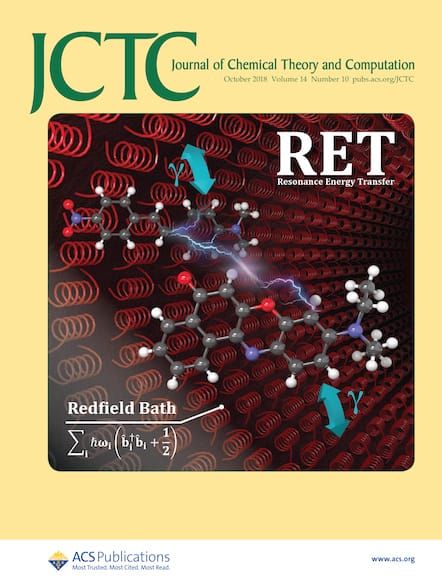运动方程冷冻对型耦合簇方法的电子亲和关系及其对单激发、分子轨道和基集大小的依赖。
IF 5.5
1区 化学
Q2 CHEMISTRY, PHYSICAL
引用次数: 0
摘要
我们介绍了一系列用于计算电子亲和和开壳电子结构的替代电子亲和运动方程-冷冻对耦合簇(EA-EOM-fpCC)方法。这些方法与参考Δ-CCSD(T)方法和具有代表性的分子数据集的实验数据进行了系统的基准测试,这些数据集使用自然对耦合簇双(pCCD)轨道和各种基集大小。还讨论了与规范CC方法的比较。此外,将EA-EOM-fpCC结果与在相同基态fpCC参考框架下由双电离势和单电离势(DIP-EOM-CC和IP-EOM-CC)差异得出的结果进行了比较。我们的研究结果表明,冷冻对方法在保持高精度的同时显著降低了计算成本,为研究大分子中的电子亲和和开壳系统提供了一种有效的策略。IP/DIP-EOM-fp(L)CCSD模型是预测ea的最佳后pccd模型,与实验结果相比平均误差为0.09 eV,而EA-EOM-fpCCD最接近Δ-CCSD(T)参考数据。最后,不建议使用IP/DIP-EOM-fpCC配方进行EA计算,如果使用足够大的基集,EA- eom - fpcc变体也不需要扩散函数。本文章由计算机程序翻译,如有差异,请以英文原文为准。
Electron Affinities from Equation-of-Motion Frozen Pair-Type Coupled Cluster Methods and Their Dependence on Single Excitations, Molecular Orbitals, and Basis Set Sizes.
We introduce a series of alternative electron affinity equation-of-motion frozen-pair coupled cluster (EA-EOM-fpCC) methods for computing electron affinities and open-shell electronic structures. These methods are systematically benchmarked against the reference Δ-CCSD(T) approach and experimental data for a representative molecular data set using natural pair coupled cluster doubles (pCCD) orbitals and various basis set sizes. A comparison to canonical CC methods is also discussed. Additionally, EA-EOM-fpCC results are compared with those derived from the difference between double and single ionization potentials (DIP-EOM-CC and IP-EOM-CC) of dicationic species within the same ground-state fpCC reference framework. Our results demonstrate that frozen-pair approaches significantly reduce computational costs while maintaining high accuracy, offering an efficient strategy for studying electron affinities and open-shell systems in large molecules. The IP/DIP-EOM-fp(L)CCSD model stood out as the best post-pCCD flavor to predict EAs, achieving a mean error of 0.09 eV compared to experimental results, while EA-EOM-fpCCD is closest to Δ-CCSD(T) reference data. Finally, diffuse functions are not recommended for EA calculations using the IP/DIP-EOM-fpCC recipe and are not required for the EA-EOM-fpCC variants if sufficiently large basis sets are employed.
求助全文
通过发布文献求助,成功后即可免费获取论文全文。
去求助
来源期刊

Journal of Chemical Theory and Computation
化学-物理:原子、分子和化学物理
CiteScore
9.90
自引率
16.40%
发文量
568
审稿时长
1 months
期刊介绍:
The Journal of Chemical Theory and Computation invites new and original contributions with the understanding that, if accepted, they will not be published elsewhere. Papers reporting new theories, methodology, and/or important applications in quantum electronic structure, molecular dynamics, and statistical mechanics are appropriate for submission to this Journal. Specific topics include advances in or applications of ab initio quantum mechanics, density functional theory, design and properties of new materials, surface science, Monte Carlo simulations, solvation models, QM/MM calculations, biomolecular structure prediction, and molecular dynamics in the broadest sense including gas-phase dynamics, ab initio dynamics, biomolecular dynamics, and protein folding. The Journal does not consider papers that are straightforward applications of known methods including DFT and molecular dynamics. The Journal favors submissions that include advances in theory or methodology with applications to compelling problems.
 求助内容:
求助内容: 应助结果提醒方式:
应助结果提醒方式:


